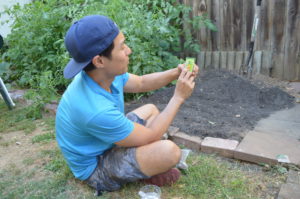How to Test Your Garden Soil
There’s a lot you can learn from getting down in the dirt. Doing a simple test of your garden soil can give you crucial information that makes caring for your plants easier and more effective.
Home soil test kits that you can purchase at your local garden center will give you a general reading of the macronutrients that most plants need—nitrogen (for green growth), phosphorus (for fruiting and flowering), and potassium (for overall health and vigor). Some kits will also include a test for pH level which is useful to know because the pH, measures the acidity of the soil, and can affect how efficiently plants access the nutrients in the soil. If the pH level is either too high or too low for the plants you’re growing, applying additional nutrients to the soil won’t necessarily do them much good. Lean the basics about fertilizer.
Knowing the status of your soil helps you make wiser decisions about treating it so you’ll save money by avoiding unnecessary amendments and grow healthier plants.
Materials List
- Trowel
- Zip top bag
- Home soil test
- Distilled water
Steps
- Gather Soil Samples: Using the trowel, dig a hole 6–8” deep. Scoop out about a tablespoonful of soil from the bottom of the hole and put it in the zip top bag. Dig 3 or 4 more holes in different parts of your garden and repeat the process, adding all the soil into the bag.
- Prepare the Test Sample: Squeeze and pinch the bag of soil to break up any lumps. Remove any small rocks or other bits of debris, then pour the soil out onto a newspaper or paper towel and leave it to dry out completely. Moisture in the soil sample can skew the test results.
- Run the Test: Following the directions that come with the test kit, add soil, distilled water, and the test powder (which usually comes in a capsule) to the vials from the kit. Be sure to use distilled water—the minerals in tap water can alter the test results. Shake the vials and then let them sit. When the contents in the vials settle, use the chart that comes with the test kit to read the results.
- Get More Details: For a few dollars more than the cost of a home soil test, you can get a more detailed analysis that, in addition to the basic tests mentioned above, also reports on micronutrients, heavy metals and toxins. The University of California Agriculture and Natural Resources UC Master Gardeners Program has put together a list of soil testing laboratories for home gardeners. Follow the instructions on the lab’s website to gather the soil sample and mail it in.
